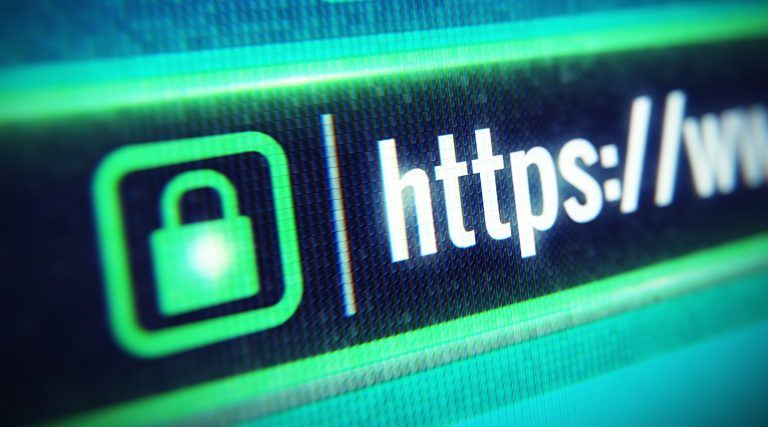IP address: how it works and 5 tools to browse anonymously
Want to browse anonymously? Start paying attention to your IP address. Just as your telephone number or your house address, the IP address shows your location as soon as you start browsing. Without the IP address, your internet connection would be impossible. On the other hand, it can make you vulnerable to different web threats as well. Learn how to use your IP address to protect your privacy.

One of the most used terms in the Internet vocabulary is what they call IP (Internet Protocol) address. Except for technology experts, most Internet users do not understand what an IP is. Since IP is related to your privacy, it is very important to know how it works and what you can do if you want to browse anonymously.
What is an IP address exactly?
Every device connected to a network needs a unique identifier so that other devices know how to reach it.
In the Internet, such identifier is known as an Internet Protocol address or IP. Such protocol works as a communication protocol which establishes specific rules that allow your computer or any other device to transmit and receive information.
Nobody can surf the web without an IP address. Let´s make an example: if you type the address www.masterdc.com in the navigation bar, your browser will translate this text automatically into an IP address. This address is composed of four numbers separated by points. For instance 121.136.1.255.
There are two types of IP addresses: internal and external also known as public and private. Each one serves different purposes that we will explain in detail later.
IP and MAC are not the same but work together
When it comes to identifying an IP address, some people confuse it with a MAC address. Although both are identification numbers, they serve different purposes but still work together.
Essentially, a MAC (media access control) is the address that manufacturers give to the network interface card that is installed in your computer. That’s why MAC is also known as a physical address or hardware address.
On the other hand, an IP address is the registration number that identifies your computer when it joins an internal or external network. To achieve the interaction between an IP address and a MAC address, something called ARP (Address Resolution Protocol) is needed.
What ARP does is link the IP with MAC. In other words, ARP provides the protocol rules to maintain the correlation between a MAC address and its relative IP address. ARP is like a passport in charge of providing address conversion in two directions.
A MAC address is usually composed of six sets of two digits or characters, for example, 00-1C-65-86-48-F9. An IP has four sets of three numbers like this: 198.182.139.250. While a MAC address never changes and is unique, an IP address changes from time to time.
How does the IP address work?
An IP address is always a set of four numbers. Each number can range from 0 to 255. So, the full IP addressing range goes from 0.0.0.0 to 255.255.255.255.
The reason why each number can only reach up to 255 is that every number is really an eight-digit binary number (sometimes called an octet). In an octet, the number zero would be 00000000, while the number 255 would be 11111111.
Each IP address consists of two different parts – a network ID and a host ID. The first few octets in an IP address identify the network. The exact amount of octets depends on the class of network.
For example, in class A, the first octet identifies the network whereas the rest of the address is used to identify a host.
In a class B address, the first two octets stand in the network, etc. This distribution allows you to use different network types: A, B, C. Class D, and E are reserved for multicasting and research.
| Class | Range first octet | Network / host | Number of network bits | Number of hosts bits |
|---|---|---|---|---|
| A | 1-127 | N.h.h.h. | 8 | 24 |
| B | 128-191 | N.N.h.h. | 16 | 16 |
| C | 192-223 | N.N.N.h. | 24 | 8 |
| D | 224-239 | not to be used for hosts | ||
| E | 240-255 | not to be used for hosts |
The table shows how each IP class network works.
IP versions
IPv4: based on 32 bits distributed in four sets of octets. The range of each one goes from 0 to 255. IPv4 is the current Internet protocol, however, this protocol is reaching the limit of its possibilities (4.3 billion addresses) to create IP addresses.
IPv6: This is the newest version of the Internet Protocol and is based on 128 bits distributed in eight sets of 16 bits. The range of each section goes from 0 to 65,536. This structure can provide more than 18 billion IP addresses. As IPv4 is becoming lack of IP addresses, IPv6 is the solution to replace it.
The IP works according to the network structure
Internal network
The IP address can be dynamic or static. It changes according to the needs of each network (external or internal).
In case of an internal network, it is possible to use the router to assign a different IP address to each of the devices that try to connect to the network by using dynamic host configuration protocol (DHCP).
On the other hand, the administrator must use a static IP address to control IP addresses assignments. It is important to avoid IP duplication to stop conflicts in the internal network.

The IP address is composed of four numbers separated by points and it can be static or dynamic.
External network
When connecting to the Internet, most users obtain a dynamic IP address. This means that your IP will change from time to time due to your internet provider. Your IP can stay the same for days, weeks or even a month, but it probably changes without notice.
Internet providers have a specific amount of IP. By generating dynamic IP addresses, they guarantee that all of them will be rotating and correctly assigned to each device connected to the internet.
Dynamic or Static?
In general, a static IP must be configured manually. We call it static because it does not undergo any change. Any device can adopt a static IP address. This type of IP is also known as a dedicated IP address.
The opposite version is the dynamic IP that is granted to any device connected to a network. The dynamic IP address changes constantly and is automatically assigned by DHCP.
How to browse anonymously
Now that you have a general idea of how your IP works, you may wonder if it is possible to hide it to browse anonymously. The answer is yes, and the following tools can help you do it.
Tor
Most popular browsers such as Chrome or Safari offer to browse anonymously, but this does not mean that your IP address is completely anonymous. Tor is the only browser that allows users to browse anonymously.
The IP address will be hidden every time you visit a website. In this way, websites cannot collect your location or register your activity online. Tor uses a complex technology that reacts using different connection methods according to your browsing habits. No experience is needed to use Tor. Simply open it and start to browse anonymously.
TunnelBear
TunnelBear offers a free VPN client that allows you to browse anonymously plus a filter to avoid the traffic tracking configured by the Internet service provider. The weak point of TunnelBear is the limit of data in its free version: 500 MB per month.
Hotspot shield
In addition to hiding your IP address, this tool also gives you the opportunity to access sites that may be blocked in your country. HotspotShield offers encrypted traffic tunnel to add additional security to your privacy through a friendly interface.
CyberGhost
If you do not need to browse anonymously so often, CyberGhost is a good option. This VPN protects your real IP address by faking it, so the network will detect that you are browsing from a different location. In addition, this tool lets you track all outgoing and incoming traffic that passes through your device.
NordVPN
With more than 3,400 servers worldwide, NordVPN is one of the most effective VPNs. Along with the IP address protection, NordVPN blocks advertisements and prevents spyware. This VPN is compatible with the most popular browsers and you can use it with your router to connect all the devices in your network. A great option to browse anonymously.
Now that you know how to browse anonymously you may be interesting in getting to know how to choose a safe password to shield your privacy.



